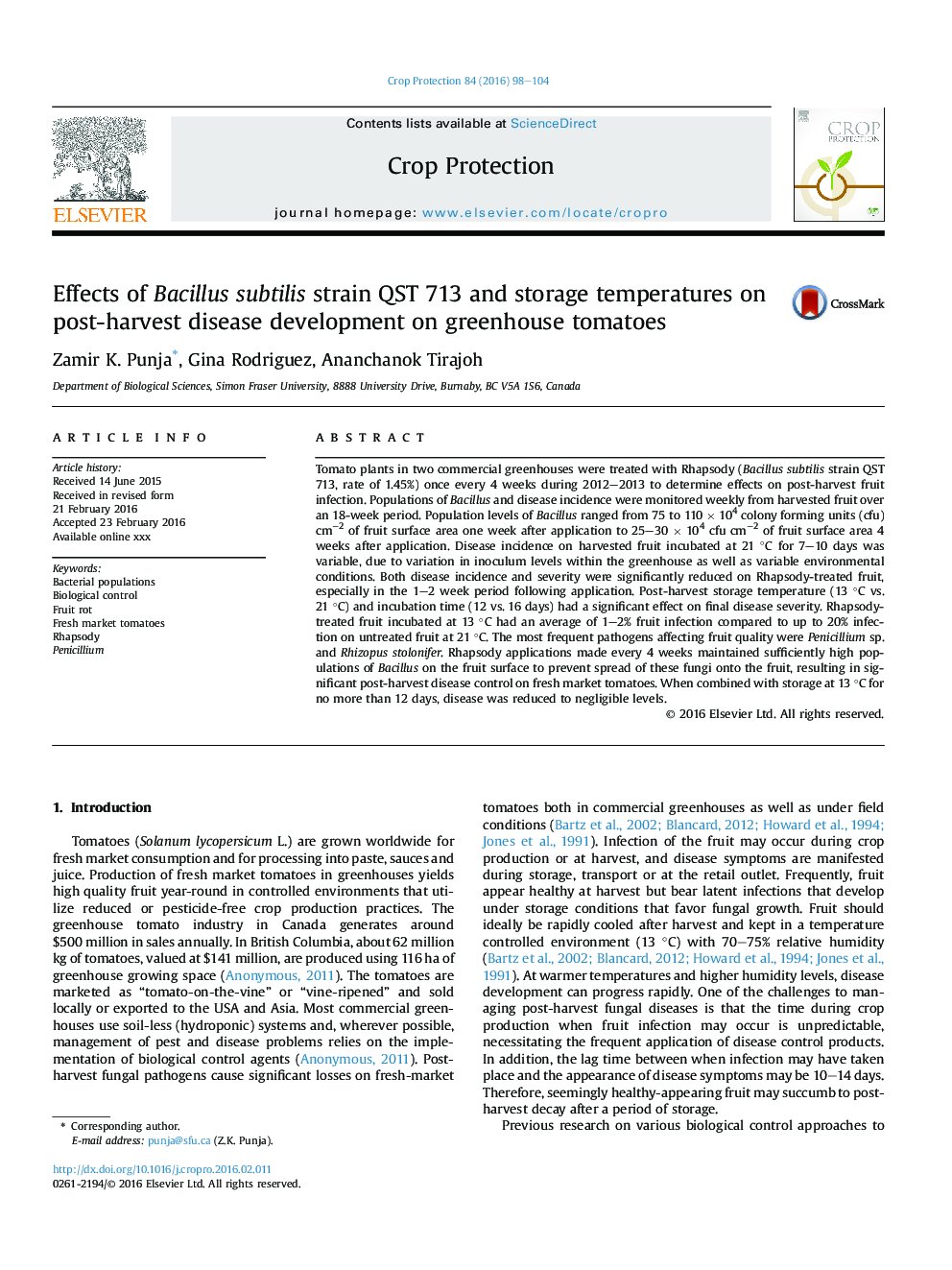| Article ID | Journal | Published Year | Pages | File Type |
|---|---|---|---|---|
| 6373229 | Crop Protection | 2016 | 7 Pages |
Abstract
Tomato plants in two commercial greenhouses were treated with Rhapsody (Bacillus subtilis strain QST 713, rate of 1.45%) once every 4 weeks during 2012-2013 to determine effects on post-harvest fruit infection. Populations of Bacillus and disease incidence were monitored weekly from harvested fruit over an 18-week period. Population levels of Bacillus ranged from 75 to 110 Ã 104 colony forming units (cfu) cmâ2 of fruit surface area one week after application to 25-30 Ã 104 cfu cmâ2 of fruit surface area 4 weeks after application. Disease incidence on harvested fruit incubated at 21 °C for 7-10 days was variable, due to variation in inoculum levels within the greenhouse as well as variable environmental conditions. Both disease incidence and severity were significantly reduced on Rhapsody-treated fruit, especially in the 1-2 week period following application. Post-harvest storage temperature (13 °C vs. 21 °C) and incubation time (12 vs. 16 days) had a significant effect on final disease severity. Rhapsody-treated fruit incubated at 13 °C had an average of 1-2% fruit infection compared to up to 20% infection on untreated fruit at 21 °C. The most frequent pathogens affecting fruit quality were Penicillium sp. and Rhizopus stolonifer. Rhapsody applications made every 4 weeks maintained sufficiently high populations of Bacillus on the fruit surface to prevent spread of these fungi onto the fruit, resulting in significant post-harvest disease control on fresh market tomatoes. When combined with storage at 13 °C for no more than 12 days, disease was reduced to negligible levels.
Related Topics
Life Sciences
Agricultural and Biological Sciences
Agronomy and Crop Science
Authors
Zamir K. Punja, Gina Rodriguez, Ananchanok Tirajoh,
